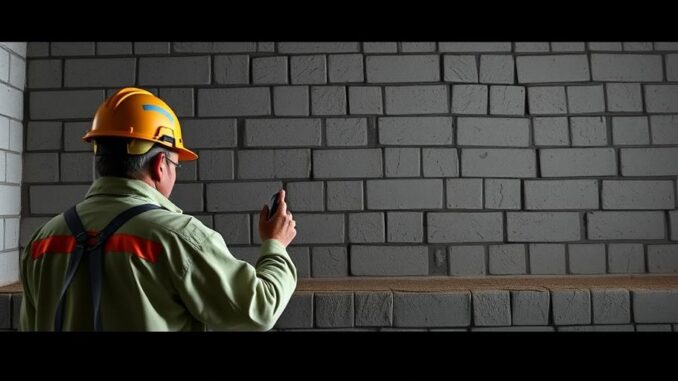
Summary
Single-sided firestopping solutions offer a way to enhance project efficiency, particularly in retrofit projects where access is limited. These solutions negate the need for occupant displacement, saving time and money. Moreover, they minimize disruption and allow projects to commence quickly.
Successful low-energy building design hinges on careful planning. Focus360 Energy can help.
** Main Story**
Okay, so in the ever-changing world of UK Building Regs, keeping fire safety top of mind is a must. You know, the old-school firestopping ways can be a real headache. Getting to both sides of a wall or floor? That’s a recipe for delays and extra costs, especially when you’re retrofitting. But hey, there’s good news! Single-sided firestopping is changing the game, making things way more efficient.
How it Actually Works
So, usually, fire protection means slapping fire-resistant stuff on both sides of a wall to stop fire from spreading. Now, single-sided firestopping? It does the same job but you only need access to one side. Pretty cool, right? This is a lifesaver when getting to both sides is a nightmare. And yeah, they’re tested like crazy to make sure they’re up to snuff, giving you a solid, compliant alternative. Trust me, it works wonders in complex jobs.
Retrofit Efficiency Booster
One of the biggest wins with single-sided firestopping? Retrofit projects get way easier. Think about it: trying to reach both sides of a wall when you’re retrofitting can be a total pain, disruptive, and seriously expensive. Single-sided solutions ditch that problem, letting you install things quicker and with less hassle. So, yeah, you save time and money. And let’s be honest, who doesn’t want that?
No more juggling access on both sides, which means less stress for everyone. Plus, it keeps the occupants happy and gets the project done faster. I remember one project where we used this, and it saved us almost two weeks! Amazing!
Less Mess, Less Downtime
When people are living or working in a building, the usual firestopping can be a real disruption. Think temporary relocations, lost productivity, and more expenses. Single-sided systems? They cut down on the chaos because you don’t have to move people out. Which is especially good for places like hospitals, schools, and businesses where things need to keep running smoothly.
The Sweet Sound of Savings and Speed
All those efficiency gains? They turn into cold, hard cash. Less labor, less disruption, no need to move people around – it all adds up to some serious cost savings. And because installation is faster, you finish projects quicker, which makes the budget look even better. It’s really a win-win.
Playing by the Rules (Building Regulations)
Sure, single-sided firestopping is great, but you gotta make sure you’re following the UK Building Regulations. Pick tested and certified systems that fit the job, and talk to fire safety experts to make sure everything’s installed right. It’s all about doing things by the book, you know? Do you want to mess that up? I think not!
Safety First (and Peace of Mind)
Besides the money and time savings, single-sided firestopping makes things safer. By stopping fire and smoke from spreading, it gives people more time to get out. And that? That makes for a safer building for everyone. It’s that simple.
Looking Ahead
As the construction industry keeps embracing new ideas, single-sided firestopping is going to be huge for fire safety. It’s efficient, versatile, and follows all the building rules, making it perfect for new and old buildings. By using these advanced solutions, we can boost fire safety while making projects smoother and less disruptive. What’s not to love? I’m honestly excited to see where this technology goes next. It really does seem like the future of fire safety.


Given the reliance on tested and certified systems, what specific testing standards or certifications are considered most reliable for ensuring the long-term performance and compliance of single-sided firestopping solutions in the UK?
That’s a great question! The standards are constantly evolving. Look for products tested to BS EN 1366-3 and certified under schemes like Certifire or LPCB. These certifications demonstrate independent verification of performance and compliance, crucial for long-term reliability. Staying updated with the latest guidance from regulatory bodies is also key.
Editor: FocusNews.Uk
Thank you to our Sponsor Focus 360 Energy
The reduced disruption offered by single-sided firestopping is a key advantage, particularly in occupied buildings. How are manufacturers innovating to further minimize dust and noise during installation, addressing common concerns in sensitive environments like hospitals or schools?
That’s a fantastic point about minimizing disruption in sensitive environments! I’ve seen some manufacturers developing low-dust formulations and quieter application tools specifically for this purpose. It would be great to hear more about real-world experiences with these newer products and techniques in settings like hospitals or schools. Has anyone else encountered innovative solutions?
Editor: FocusNews.Uk
Thank you to our Sponsor Focus 360 Energy
The point about occupant satisfaction is critical. Beyond cost and time savings, how do single-sided firestopping solutions impact a building’s long-term value by minimizing disruptions and maintaining a comfortable environment for residents or tenants?
That’s a great point! Minimizing disruption definitely boosts long-term building value. Happy tenants and residents are more likely to stay, reducing turnover costs and maintaining property appeal. Single-sided firestopping contributes to a more stable and desirable living/working environment, positively impacting the bottom line over time. What are your thoughts on this?
Editor: FocusNews.Uk
Thank you to our Sponsor Focus 360 Energy
The efficiency gains in retrofit projects are impressive. Has anyone explored the potential of single-sided firestopping to improve the sustainability rating of buildings by reducing the environmental impact associated with extensive demolition and reconstruction?
Absolutely! Reducing demolition is a great angle. Single-sided firestopping inherently minimizes waste and the energy needed for reconstruction. I think a lifecycle assessment comparing traditional methods to single-sided approaches would highlight the environmental benefits nicely. It’s a compelling case for sustainable building practices!
Editor: FocusNews.Uk
Thank you to our Sponsor Focus 360 Energy